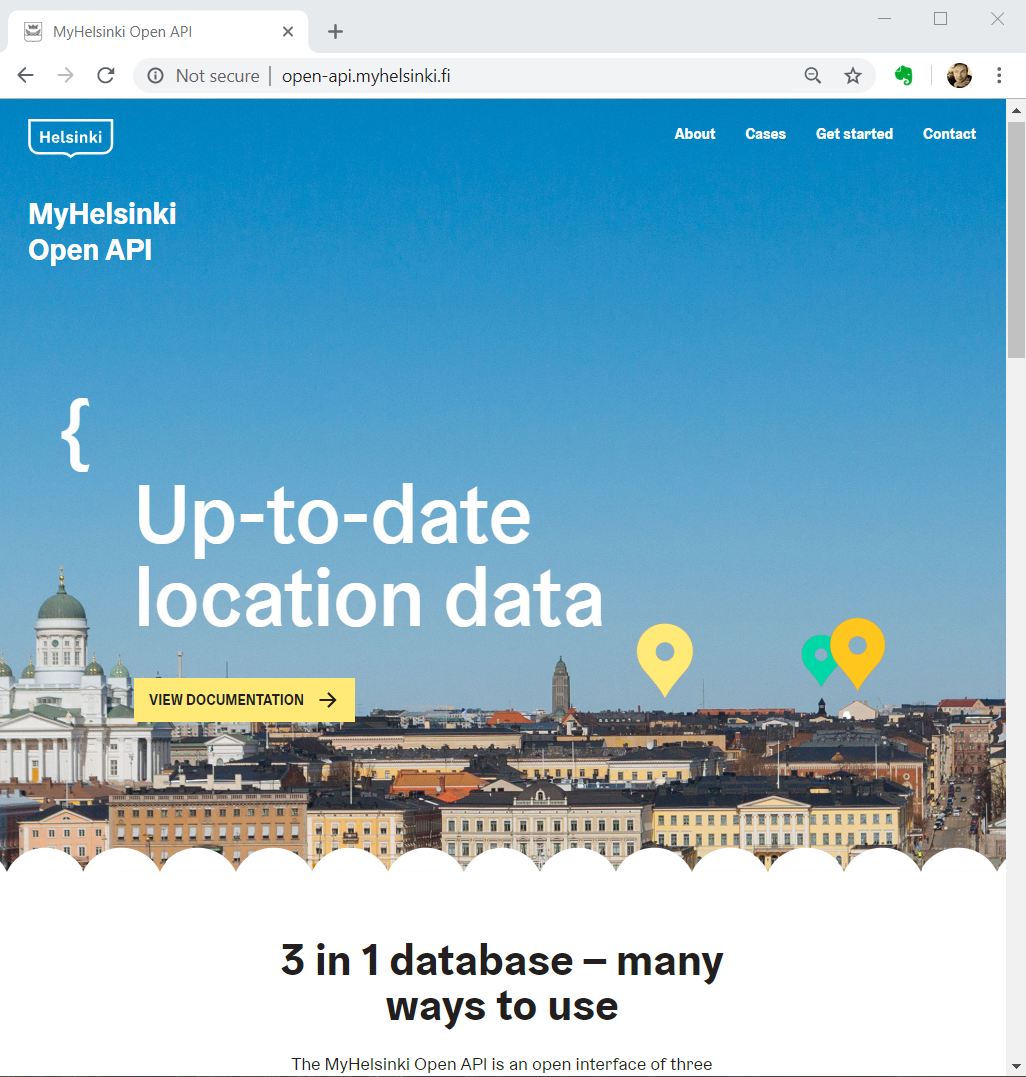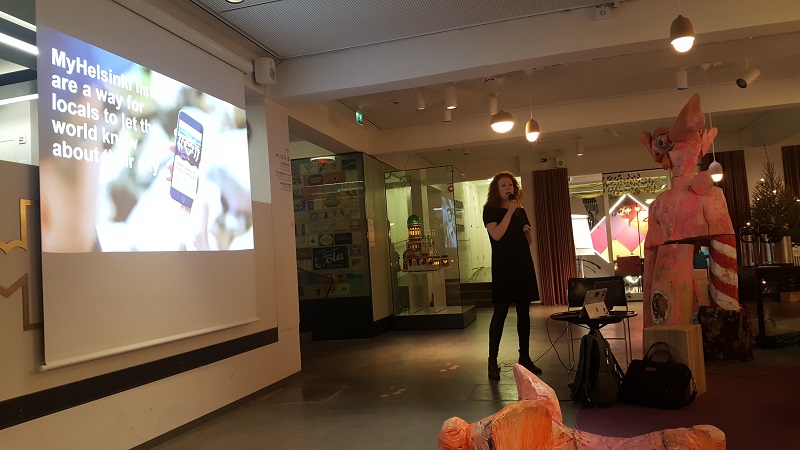Best open data initiative of 2018 shares Helsinki’s data to a billion users
The MyHelsinki Open API for distribution of tourism data won the HRI’s annual award as the best data opening in 2018. The world’s first API for open tourism data provides Helsinki data, for example, to a billion users of WeChat application.

How can a small café in Helsinki tell a billion mobile users in Asia about its existence without paying a single euro for it? It is astonishingly easy: just add your café to the places.myhelsinki.fi web form, and that is it.
When the Helsinki Marketing editors have checked that the information is adequate, it is saved in the City’s database and moves on from there through the open application programming interface (API), becoming available to anyone. One of the users of the interface is Chinese tech giant Tencent’s WeChat Helsinki mini application. It probably runs on the Chinese tourist’s mobile phone, when they arrive in Helsinki. “An API like this has not been used anywhere else”, says Jenny Taipale, who is in charge of the API data management at Helsinki Marketing.
City event information is already available to an extent through open APIs. For example, Helsinki opened the Linked Events API to the City’s event data in 2014. That is one of MyHelsinki Open API’s data sources, but the new interface also includes geographic data and activity data. Besides Linked Events, tourism data is searched from the geographic database maintained by Helsinki Marketing and the tours and trips available on the MyHelsinki website. Using the data has been made as easy as possible for builders of digital services. The data is offered from one well-documented interface, which is easy to use for queries based on, e.g., language or geographic limits.
Own databases for utilisation
The designing of the API started from the desire to be able to use Helsinki Marketing’s own geographic database with improved efficiency. “The database has served us for more than a decade as an internal data source. For example, the tourist information used it for checking museum opening hours at the information desk. We understood that we had valuable data and started to think how it could be made available for wider use”, tells Taipale. In 2017, the City’s own database got a new purpose of use, when the MyHelsinki website, which used the same basic data, opened for tourists to Helsinki.

But to make it possible for third parties to make use of the data, a well-documented and maintained API is needed. The idea of an open API went from idea to reality, when a Helsinki Marketing representative met tech company Tencent’s representative at the WTCF tourism organisation’s meeting in Beijing in autumn 2017. In Finland, Tencent is mainly known as the new owner of game development company Supercell, but in China Tencent’s billion-user WeChat has expanded from a messaging service into an all-encompassing mobile application, which can be used for mobile payments, hotel reservations etc. It is also possible to build Mini Program mobile applications for different uses on the WeChat platform.
“Tencent was looking for a pilot partner for its tourism application. Helsinki, on the other hand, wants to become known for its pioneering efforts in digital services, so we are actively looking for co-operation opportunities, internationally as well”, tells Jenny Taipale.
The stream of Asian tourists to Helsinki has been growing, which is why Helsinki Marketing caught an interest in the pilot project. The construction of the joint application started in co-operation between Tencent, Helsinki Marketing and traffic operator Whim. The Helsinki data needed for the service was already there, the only thing needed was an API to read the data from Helsinki’s data systems into WeChat. “Even though the API was built in co-operation with Tencent, we were constantly thinking of the global need, so that as many as possible would be able to use the API.”
The first version of WeChat Helsinki Mini Program, which uses the API, was completed in the summer of 2018. In a year, it has developed into a full service mobile application: Chinese tourists can search in their own language for interesting attractions and events in Helsinki, and navigate in the City and even buy bus tickets with their own mobiles.
The pilot project was accompanied by an open API that can be used by any web service developer. Jenny Taipale tells that the activities in 2019 have consisted of collection of feedback and development ideas on the new API and pitching of the idea towards big players in the market.
New tool for digital marketing
A digital revolution is underway in city marketing. A good example of the City’s agile digital marketing is the MyHelsinki website, which trusts the power of recommendations from locals. The site’s slogan is ”Your local guide to Helsinki”. So the recommendations are not provided by the City’s marketing company, but real people of Helsinki. The maintenance of the site has also been crowdsourced. New objects can be entered by anyone, the Helsinki Marketing editors just ensure that the data is up-to-date and of uniform quality.
The open API for distribution of tourism-related data is an unprecedented tool in city marketing. Helsinki’s pioneering work has gained attention around the world. “This has raised a lot of interest and questions from other competing cities. Maybe they will build similar solutions in the future.”
However, making all data that are interesting to tourists available through one API was not just a simple pioneering project. “With the API, we want to ensure that high-quality data of Helsinki is distributed as widely as possible”, tells Taipale.
Taipale’s business card says “Head of Partnerships and Networks”. One of her tasks is to market the MyHelsinki API to potential utilisers. The big players that Taipale is talking about are online travel agencies that offer destination data about cities, such as TripAdvisor and Booking.com.
Surprisingly, Helsinki’s API is an idea so new that not even Internet age travel agencies are ready to utilise it yet. “The challenge is that they do not yet have ability to connect APIs to their own systems.”
Another important target group for Taipale are the local application developers. “We encourage them to utilise the API. Discussions have been held, now we are eagerly waiting for new solutions or applications.”
The MyHelsinki API was a topic at the Helsinki Loves Developers meetup right after it had been published in December 2018. What was the result of the developer meeting? “They came with good hints for the development work.”

No developer made direct promises on building a new web service based on the API, but the use statistics of the interface shows that development work is being done. “The API has had user peaks, so something is happening in there.” The educational institutes in the metropolitan area have already utilised the API, for example in theses. “And reported bugs”, thanks Taipale
There is no detailed information about the use of the API since it is, as the name says, open: no registration or API keys are needed.
Doesn’t cost a fortune
Many API projects come to a halt either due to background systems not allowing the transfer of data out of the systems or because it would be too expensive.
Jenny Taipale says that the technical implementation of MyHelsinki Open API has cost around 60,000 euros. When compared to the entire marketing budget of the City, the expenses of the API development were a small investment, especially as the Helsinki innovation fund supported the project.
Technical knowledge from outside one’s own organisation is needed, as the marketing organisation starts developing an API. Jenny Taipale thanks Futurice, which was in charge of the technical implementation. “For me, this was a jump into cold water. Two years ago, I knew nothing about APIs, now they have become familiar. We had an excellent project co-ordinator at Futurice, everything went well.”
The biggest issue was not related to the technology of the API, but to the lawfulness. According to Taipale, one of the biggest efforts was to sort out the legal user rights and licence issues for the image material shared through the API. “That took some time to iron out”.
How MyHelsinki Open API was developed
2008 Helsinki Marketing starts gathering geographic data into its own database. The data is used for tourist information purposes.
Summer 2017 The MyHelsinki website with the people of Helsinki’s own tourism tips opens.
Autumn 2017 Tencent and Helsinki agree on a pilot project.
Spring 2018 The development of an open API starts, the first version of the WeChat Helsinki Mini Program efor Chinese tourists is published.
Autumn 2018 MyHelsinki Open API opens.
2019 HRI awards the MyHelsinki Open API as the data opening of the year.
Jenny Taipale’s tips for API development
- Think bravely and with an open mind about what data could be made available through open APIs. We did not have an ideal for the MyHelsinki API anywhere in the world.
- Look up good partners for the implementation. It is worth investing time in the procurements, to get a partner that it is easy to work with and get results.
- Orderly and systematic working methods are important. For example, think closely about the target groups for the API.
Translation: Henrik Andersson
